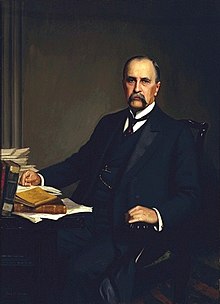User:Gabriela N. Dominguez/Ligature (medicine)
This is Gabriela N. Dominguez sandbox draft page
Medicine[edit]
Medicine is the science and practice of establishing the diagnosis, prognosis and treatment, is the field of health and healing. It includes nurses, Doctors and a variety of Specialist from different branches. Prescientific forms of medicine are now known as traditional medicine and folk medicine. They remain commonly used with, or instead of, scientific medicine and are thus called alternative medicine. As an example, evidence on the effectiveness of acupuncture is "variable and inconsistent" for any condition, but is generally safe when done by an appropriately trained practitioner. In contrast, alternative treatments outside the bounds not just of scientific medicine, but also outside the bounds of safety and efficacy are termed quackery. Medicine has been practice true prehistoric times, its one of the oldest profession however is one of the most important, considered art, an area of skill and most important knowledge. Throughout the years medicine has evolved, knew techniques, discovered cures, healthier and more effective medications, technology has been a big part of these achievements.
Fields/ Branches of medicine[edit]
- Anatomy: The science that studies the structure of the body. anatomy is one of the branches of natural science witch deals with the structural organization of living things.
- Biochemistry: A biochemist studies chemical components and how they affect the body.
- Pharmacology: This involves the study of pharmaceutical medications, or drugs, where they come from, how they work, how the body responds to them, and what they consist of.
- Biophysics: This uses physics, mathematics, chemistry, and biology to model and understand the workings of biological systems.
- Cytology: This is a branch of pathology that involves the medical and scientific microscopic study of cells.
- Genetics: This is the study of genes and their impact on health and the body.
- Neuroscience: Neuroscientists study the nervous system and the brain and investigate diseases of the nervous system. Aspects of neuroscience include computational modeling and psychophysics. Some types of neuroscience are cognitive neuroscience, cellular neuroscience, and molecular neuroscience.
- Biomechanics: This focuses on the structure of biological systems in the body and how they work, using a mechanical approach.
- Microbiology: This is the study of organisms that are too small to see with the naked eye, known as microorganisms. Aspects of microbiology include bacteriology, virology, mycology (the study of fungi), and parasitology.
- Radiology: Radiologists use X-rays and scanning equipment during the diagnostic procedure, and sometimes as part of treatment, too.
- Pathology : This is the study of disease. A pathologist often works in a laboratory, where they do tests — usually on a sample of blood, urine, or body tissue to help diagnose diseases and conditions.

The caduceus is the traditional Hermes often use as a symbol of medicine - Embryology: This branch of biology studies the formation, early growth, and development of organisms.
History of Medicine[edit]
Throughout history medicine has expanded because of societies that have changed in their approach to illness and disease from ancient times to the present. Early medical traditions include those of Babylon, China, Egypt and India. Sushruta, from India, introduced the concepts of medical diagnosis and prognosis. The Hippocratic Oath was written in ancient Greece in the 5th century BCE, and is a direct inspiration for oaths of office that physicians swear upon entry into the profession today. In the Middle Ages, surgical practices inherited from the ancient masters were improved and then systematized in Rogerius's The Practice of Surgery.
Medicine symbol[edit]
The Rod of Asclepius or also known as Staff of Aesculapius and asklepian, is a serpent entwined rod wielded by the Greek god Asclepius. he was also known by Hepius, was a hero and god of medicine in ancient Greek religion and mythology. He is the son of Apollo and Coronis, or Arsinoe, or of Apollo alone. Asclepius represents the healing aspect of the medical arts. The symbol has continued to be use in modern times, where it is associated with medicine.
important contributions[edit]

Sir William Osler (1849-1919) is known as the father of modern medicine for revolutionizing the way in which medical education was taught during his tenure at Johns Hopkins School of Medicine. Osler played a central role in establishing the internship and residency system, and also instituted the method of training students at the bedside of the patient. Osler was known to say, “He who studies medicine without books sails an uncharted sea, but he who studies medicine without patients does not go to sea at all.” A British Canadian, Osler began his career at the Toronto Medical College, and graduated with his M.D. in 1872 from McGill University in Montreal. As was often the case at the time, Osler expanded his knowledge of different medical standards of practice by studying in London, Berlin, and Vienna. It was his experiences in these settings which helped him to mold his best practices for medical education, and made him a leader in internal medicine. Osler’s prowess in the medical field was soon acknowledged when he was elected a fellow of the British Royal College of Physicians in 1883. He then when to Johns Hopkins recruited Osler from the University of Pennsylvania Medical School to be physician-in-chief of the newly established Johns Hopkins Hospital, and professor of medicine at the school of medicine.

